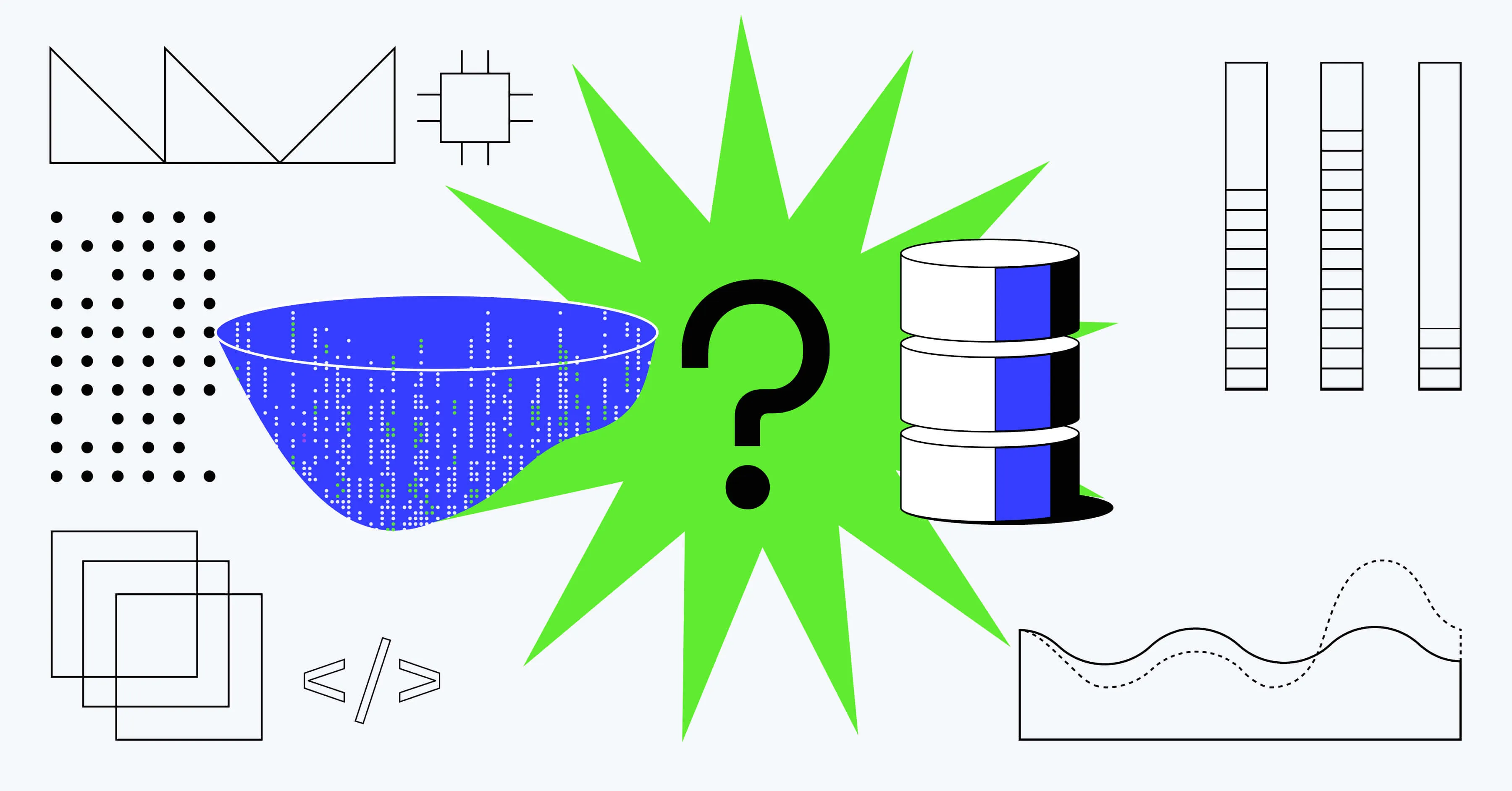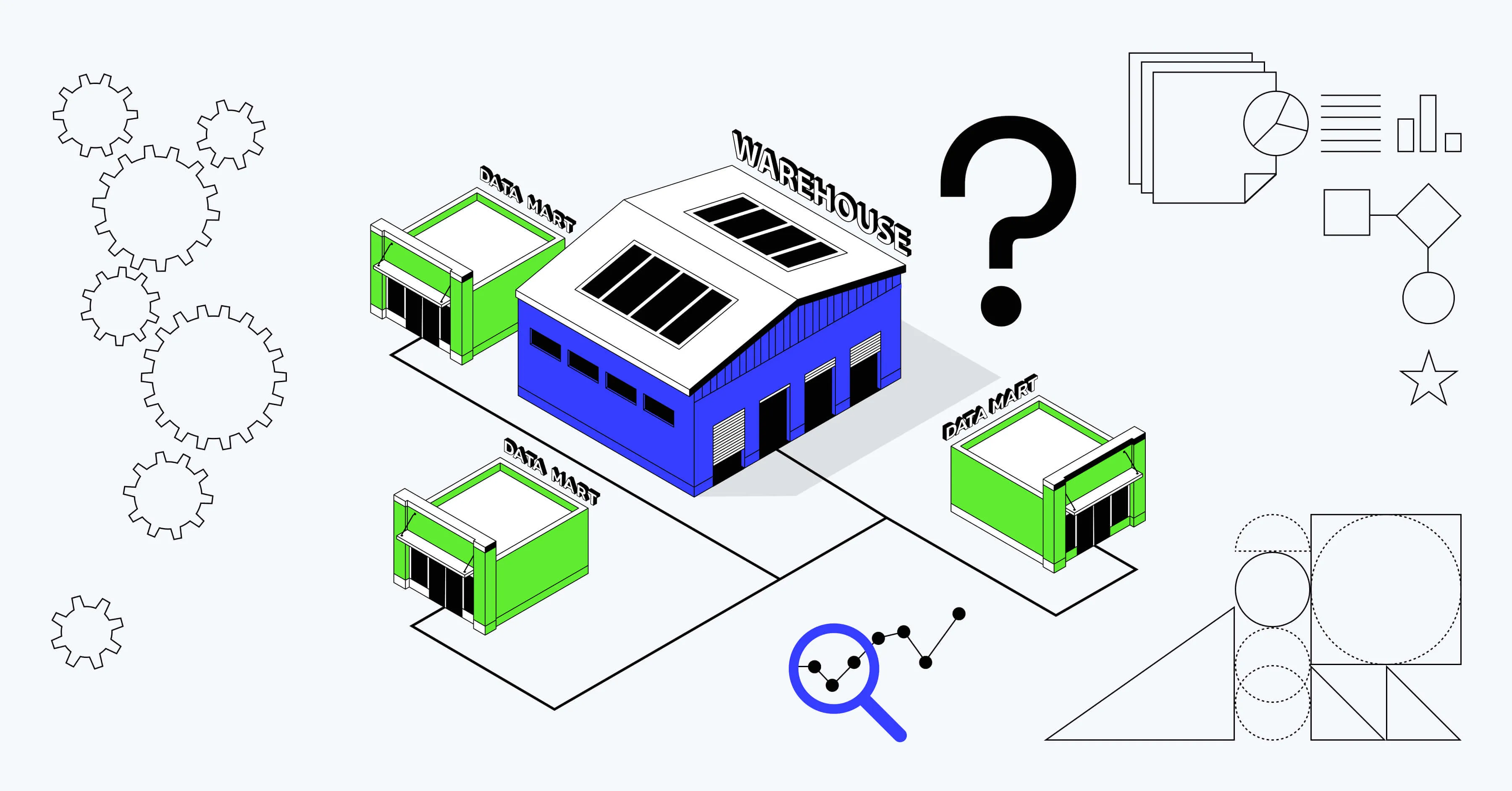Differences between data lakes and data warehouses


Share
Centralized data stores like data lakes and data warehouses are key solutions to a data-based decision-making process. But which data store should you invest in, and which is more likely to generate results for your organization?
Data Lake vs. Data Warehouse: Key Differences
Whether you’re a CEO or product manager, your role probably involves retrieving, storing, and analyzing data about your digital products. From reports on new signups to breakdowns of monthly recurring revenue, you’ll need quick access to all available insights to make data-driven decisions
Centralized data stores like data lakes and data warehouses are key solutions to a data-based decision-making process. But which data store should you invest in, and which is more likely to generate results for your organization?
In this article, we’ll look at both data lakes and data warehouses to help you choose the right data store for your use case.
Centralized data store: the benefits
Before diving into the specifics of data storage solutions, let’s cover why you need a centralized data store in the first place.
Modern organizations look to be more data-driven in their decision-making, but relying on data more isn’t a straightforward change to business practices.
As an example of possible challenges on the way to using data more in their day-to-day business, many organizations have a hard time finding the data they need to make time-sensitive decisions. In the absence of a robust data infrastructure, it can take days or weeks to get the right data, extract relevant data points, and generate ready-to-review reports. Most critical decisions cannot be put on hold pending a report, which can take weeks or even months to prepare.
To add agility to the decision-making process, companies invest in centralized data infrastructure—data stores that receive data from all parts of the business and make it available to data analysts for ad-hoc research or automated reporting.
Data lakes and data warehouses are common patterns for building such infrastructure. Let’s look at both in greater detail.
What is a data warehouse?
A data warehouse is a central repository of data that’s structured with a specific purpose in mind. “Data warehousing” refers to the process of collecting and handling data from various sources to extract valuable information. Once imported into a data warehouse, data is easily accessible to analysts who can generate reports using raw data points, or create automated dashboards using tools like Looker or Tableau.
Data travels to the warehouse over a series of data pipelines that extract, load, and transform each data stream into a standardized structure. The data warehouse is generally separate from the production databases.
Data warehouse characteristics
| Single source of truth | Thanks to the data’s preprocessing on its way to the warehouse, the data is structured, consistent, clean, and reliable. |
|---|---|
| Defined purpose | Data analysts help executives define goals for a warehousing solution in advance, which makes a warehouse highly efficient at providing specific insights. |
| Ready for BI tools | Analysts can view the data from a data warehouse directly in business intelligence (BI) dashboards and reports. |
| Historical insights | Warehouses usually contain snapshots of all important database tables, making it easy to understand changes in those tables over time. |
| Security | Database administrators and security managers can set up access policies to ensure the protection of sensitive data. |
Below you’ll find an example structure of a data warehouse. The data within a warehouse is structured, and the integrated analysis and reporting tools allow analysts to easily access reports based on predefined criteria.
What is a data lake?
A data lake takes a different approach to data storage.
While data structuring leads to more efficient data analysis, the structuring process by its nature is destructive and results in loss of detail. Details that may seem insignificant today, for example, the exact sequence of the data sent by a web app user’s browser, may become crucial in the future when you need to trace a security issue back to its origin. If transformation scripts remove everything deemed nonessential before the data is loaded, the important details can be lost forever.
To address the need for detail, a data lake stores large amounts of raw, unstructured data in its original format. Data lakes support a range of data types, from exports of database tables to graphs, CSV files, emails, images, and video streams. Because the data is stored in its raw format, it needs to be transformed before being analyzed. Business users cannot directly access data lakes, which instead are operated by data engineers.
The data lake’s “raw” nature opens up many new vectors of analysis. The fact that the data is unorganized means that there’s no limit to what you can do with it. Extracting specific insights from a data lake can be cumbersome because of its lack of structure, but the benefit of having the raw data available for future analyses frequently compensates for the inefficiency.
Data lake characteristics
| Stores everything | A data lake contains a range of company data in its original format, regardless of the data’s size, origin, or purpose |
|---|---|
| Malleability | The data lake does not define the data’s end-goal. As needs arise, data engineers will create scripts to extract and transform the data and to obtain the relevant insights. |
| Big data analysis | Data scientists can use AI and machine learning techniques to perform deep analysis on data lakes. |
| Cost and performance efficiency | Holding large amounts of data has cost implications, and analyzing many data entries to extract insights can be time-consuming. However, data stored in common big-data formats like ORC can be compressed and indexed to make its retrieval faster and more cost-effective. |
| Zero loss | The unprocessed state of the data ensures that no data that could be useful in the future is lost. |
| Real-time analysis | As data in a data lake is not preprocessed ahead of time, data lakes open up possibilities for real-time data analysis on data points as soon as they make it to the lake. |
The below diagram illustrates the structure of a data lake, which holds both structured and unstructured data. Tools like real-time analytics engines and AI applications access the data to transform it and create more specific insights. When needs for new analysis arise, only the tools and processes outside of the lake need to be updated—the data pipelines that export the data from its sources don’t need to be changed.
Data warehouse or data lake: which should you use?
Thanks to being future-proof, data lakes are a good fit for organizations that do a lot of product discovery, early-stage product innovation, and continuous iteration. For a new product, you usually don’t know which insights you’ll need from the data up front, so data lakes are more effective in the early stages of product development. Data analysts can make updates to dashboards and reports quickly even if the changes to the underlying queries are significant.
On a larger scale, however, a data lake can get expensive and slow to use due to the volume of data that it stores.
Use a data warehouse if you have larger volumes of data coming through well-established and well-understood pipelines for your software products. In environments where the relevant data is unlikely to change, using a warehouse instead of a lake can result in faster reports and lower data storage costs.
Alternatively, you can combine a data lake with a data warehouse to get the best of both worlds. For example, all data can be set up to flow into a data lake, and a subset of the data in the lake can be loaded into a data warehouse.
Data warehouses vs. data lakes
| Data Warehouse | Data Lake | |
|---|---|---|
| Data Structure | Processed, structured, and organized data | Raw data in its original state |
| Purpose | Efficient analysis for decision-making | Product discovery, constant adaptation of the metrics, rapidly changing needs |
| Administrators | Data analysts | Data engineers |
| Information storage | Data stored efficiently in a transformed format | Data stored inefficiently in a variety of formats |
| Versatility | Low | High |
| Implementation complexity | High | Low |
| Difficulty of adding new data | Complex | Simple |
| Data processing | ETL (Extract, Transform, Load | ELT (Extract, Load, Transform) |
| Usage | Automated reporting, historical or targeted analysis | Research, data science, AI prediction |
Implement your data storage solution with Mighty Digital
Not sure whether you require a data warehouse or a data lake? Most businesses can benefit from a combination of both approaches to maximize both the organizational agility and efficiency of analysis and report generation.
Need an expert opinion to help you decide? We’re happy to help!
At Mighty Digital we’re experts in planning, implementing, and maintaining data storage solutions. We’ll work closely with your data, marketing, and finance teams to implement the tooling to take your data-driven decision making approach to the next level.












